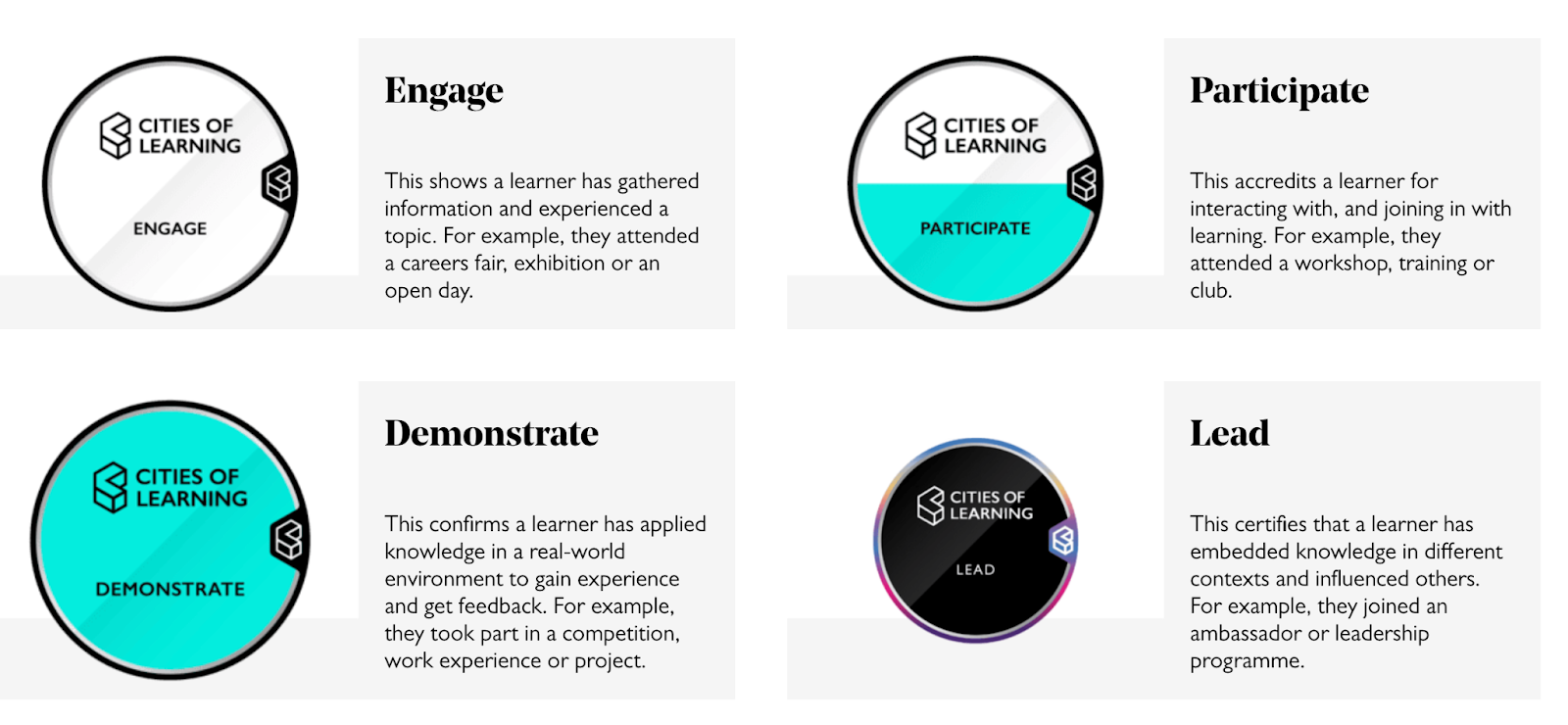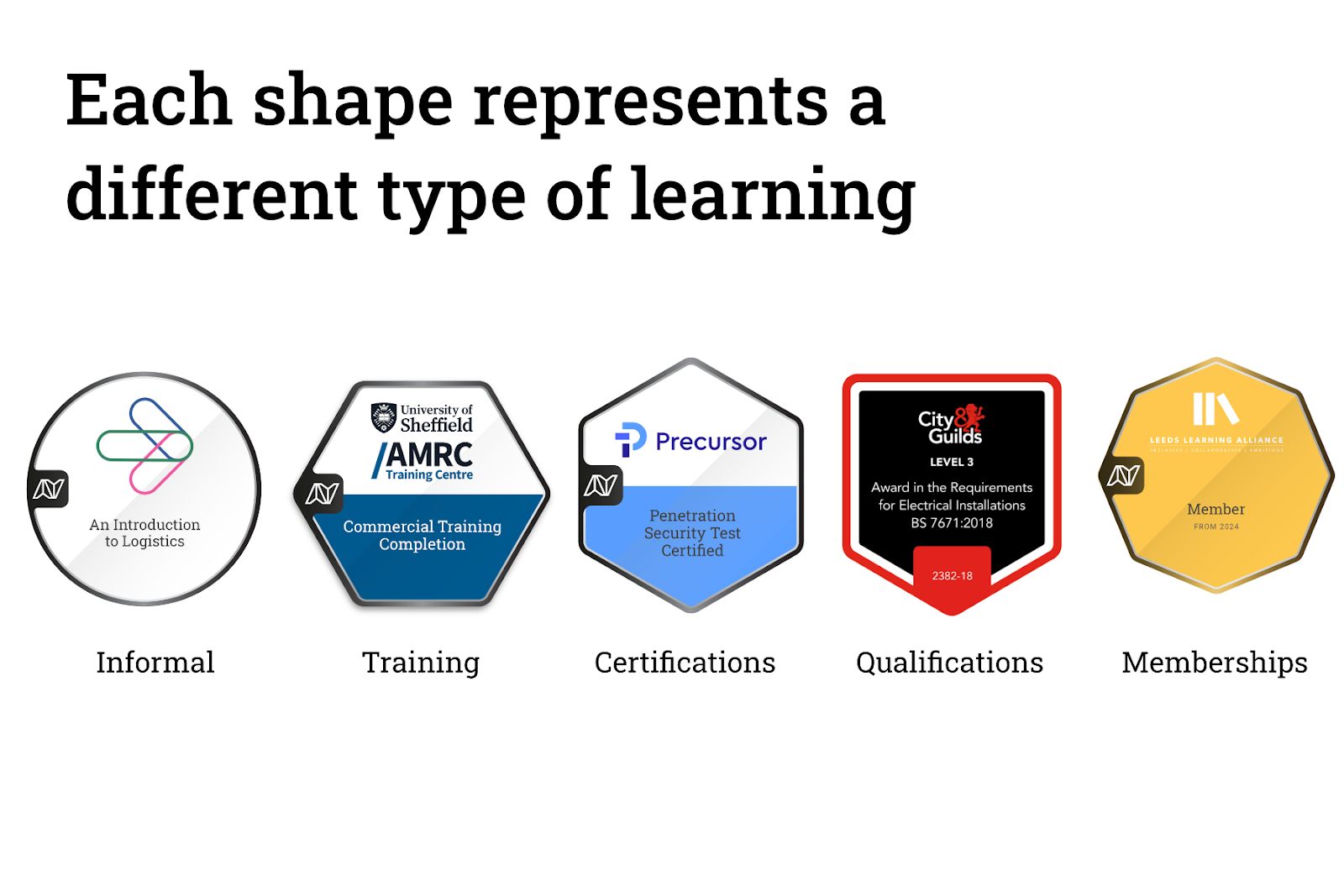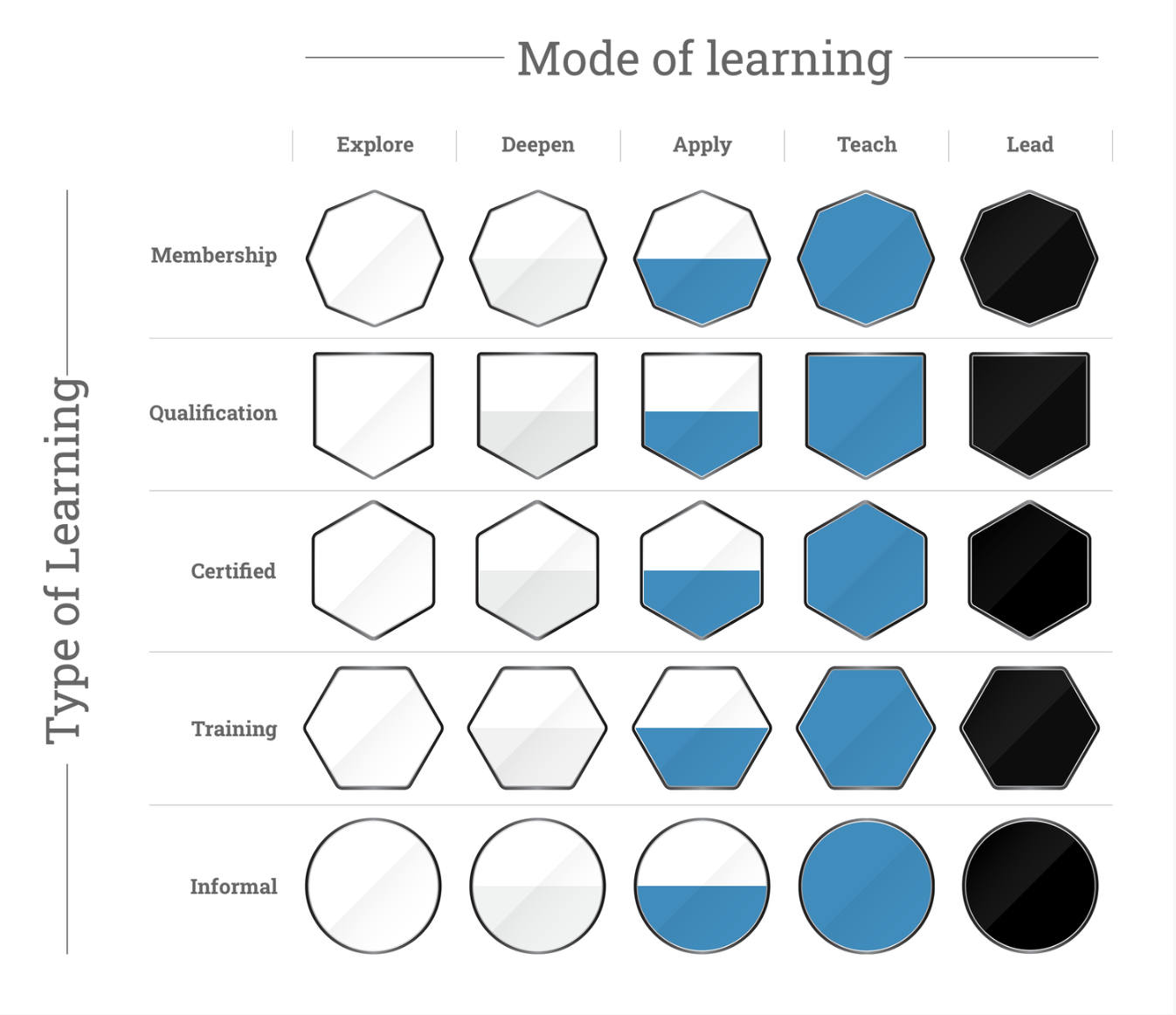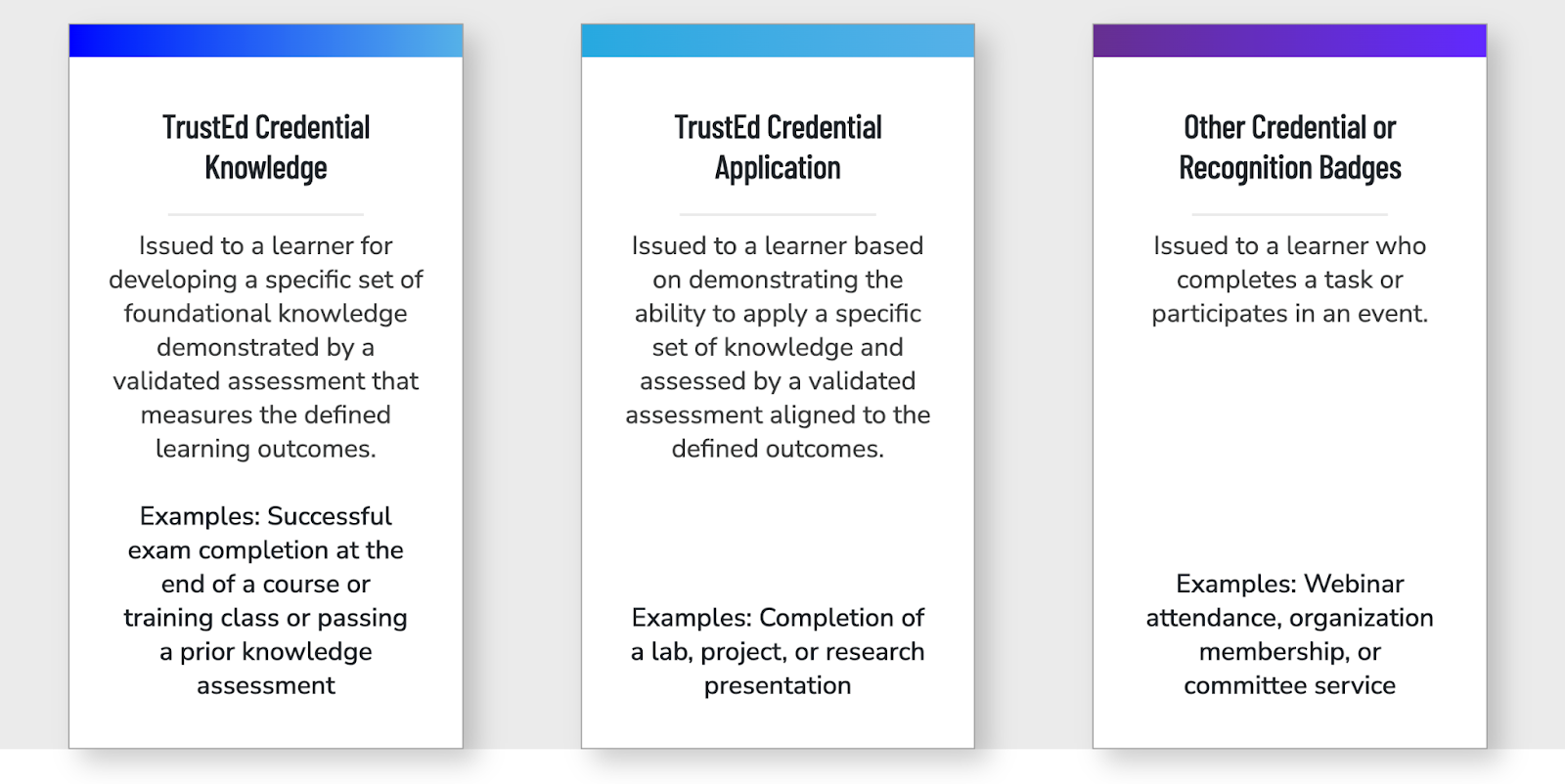The Rise of Digital Badges: Why Consistent Design is a Blind Spot for the Sector

In my previous article, I discussed why our relationship with trust is so important for the
future of digital badges. If they are to continue transforming skills recognition, we need to tackle another urgent issue: consistent design. This is evident in figures from 2023, showing that around 26,000 organisations had designed more than 500,000 digital badges without any common design framework. For anyone starting their journey designing a badge, their first question will be what it looks like. But with so much confusion, how can anyone feel confident the learning they want to communicate will be clearly understood?
Without consistent design, employers, educators and learners have no hope of recognising what a badge represents. However, it’s an issue that’s well within our power to solve – and by addressing it, we can unlock more of the opportunities that digital badges offer. If our sector is to capitalise on these, a discussion about the frameworks that guide badge design feels not only timely, but very much overdue. But how should we model a design with a framework that’s open? And are there any frameworks offering us a blueprint?
After developing digital badges for 13 years, Tim Riches from Navigatr is well placed to offer some informed answers and share his insights. In the second of two articles, he shows why an open and collaborative approach can create the consistency and rigour that is vital if educators, employers and individuals are to understand the value of digital badges.
A Fragmented and Confusing Landscape
Imagine driving through a country where each city, town and village has designed its own road signs using different shapes, colours and symbols. Some places might use triangles for speed limits, while others use circles. One town’s stop sign might be blue and another’s green. It would be chaos and accidents would be inevitable. We face the same confusion with digital badges.
This is because digital badges – and the metadata they contain – are not only read by machines, but humans too. Their visual design should instantly tell the reader the type and depth of learning they represent. The confusion starts when the same designs and shapes are used for different types of learning. Multiply this by the thousands of organisations issuing badges using their own designs and you get a picture of the confusion.
If we look at some real-life scenarios, consider a university designing a digital badge for an introductory workshop and a degree. If the workshop is mistaken for the degree – intentionally or unintentionally – there’s a real risk of reputational damage. For recruiters reviewing badges, consistent visual design is paramount for quickly understanding the different types of learning they represent. And for those designing badges for the first time, it’s a daunting and confusing task without a framework to guide the process.
The Benefits Would be Transformative
Adopting consistent designs for digital badges – just like universal road signs – would ensure clarity, trust and efficiency for everyone. Learners would feel confident knowing what badges represent, and they would more easily see career pathways, from informal learning through to courses, apprenticeships and degrees. Learning providers would know how to badge programs in a way that employers understand, thus improving recruitment decisions and skills development for new employees.
Simone Ravaioli, Director, Global Ecosystem and Innovation said:
“Data on the inside, signals on the outside – digital badges combine machine-readability for standard compliance with human-readability for clarity and expression. As we add trust and quality through alignment to competence and qualification frameworks, we should strive to augment the signalling power of badges. Visual design frameworks enhance this power with instant readability – ultimately improving the value of digital credentials.”
We talk about pathways for learners, but it’s time we considered the path we’re taking with visual design. An ecosystem is evolving around digital badges that is interdependent in nature and reliant upon trust and confidence. With consistent visual design, we can transform both so everyone benefits and our sector can continue moving forward.
A Blueprint for Open Design Frameworks
I’m not alone in pushing for change. It’s exciting to see that a number of organisations are contributing towards open and accessible design frameworks. Unlike those working in silos producing closed frameworks that compound the problem, they’re working together to improve consistency around design and quality.
With this in mind, the principles below bring together insights gained from work by Navigatr on the original Open Badges Project and with City & Guilds, the RSA and many employers and learning providers. They offer a simple guide for designing frameworks, so they can better meet the needs of everyone across the badging ecosystem.
Consistent Design – The visual design of badges should instantly communicate the type, depth and level of learning to learners, employers and educators.
Interoperability – Badges should be easy to use across all types of platforms and learning settings, whether in schools, workplaces or company programs.
Inclusive – An inclusive and collaborative approach when developing design frameworks to better reflect the needs of companies, educators and learners.
Free – Design frameworks should always be open, accessible and free of charge to encourage more organisations to use them and drive adoption.
Open – A transparent approach to the development of design frameworks with clear mechanisms in place, so anyone can contribute to their development.
The following design frameworks use varying approaches, but all share the goal of categorising and visually communicating the type and depth of learning. If successfully adopted, they offer a blueprint for creating clearer learning pathways within and between organisations and badging platforms, to greatly benefit learners and employers.
Learning Agents: Inclusive Badge Taxonomy
In the graphic, you can see that the badges by Learning Agents are classified using six levels of acknowledgment ranging from official micro certifications, to informal digital badges – each representing different learning journeys and assessment methods.
“Certifications” acknowledges job-related skills, and “Assessed Learning” indicates the successful finishing of courses and programs. At the informal end of the range there is “Organized Learning Not Assessed” that indicates non-formal experiences, and “Flexible Recognition” recognises informal achievements such as community awards, peer recognition or self-declared skills.
The visual design can reflect branding or support metadata, so badges can represent lifelong learning journeys that connect formal qualifications and informal achievements. The taxonomy helps control the standards and uniformity of credentials, but also allows for adaptability, so that badge properties can evolve or combine based on preferences and needs, reflecting the fluid nature of learning and its diverse modes of recognition. This taxonomy is freely available to use under a Creative Commons licence.

The RSA Badge Standard
In the graphic for the framework by the RSA, you can see how their standard uses four layers of learning, each recognising a different mode. This standard focuses on informal learning that happens outside of formal education and builds on a learner’s interests to find pathways towards an opportunity for learning or work. The RSA were early innovators with digital badges alongside Navigatr and City & Guilds.

The Navigatr Badge Framework
In the first graphic, you can see that the framework developed by Navigatr categorises five types of learning – each of which use a different shape. The circle shape aligns to the RSA Badging Standard, and is an example of how frameworks can be mapped to each other. The shield shape represents a qualification used by City & Guilds.
The second graphic adds another visual layer to show different modes of learning. Each mode increases the level of competency and starts with “Explore”, which might represent attending a webinar or answering a quiz after watching a video, and applying those skills. The modes progress up to “Lead” which is the highest level and indicates that someone can pass skills on by guiding, influencing or inspiring others. Modes visually represent the effort required to earn the badge and are signified by colour shading. Combining different modes indicates that a learner is able to apply skills in the real world, and show what they know and what they can do.
The Navigatr Badge Framework was developed with a group of digital badging and assessment experts to recognise all levels of competency, type and depth of learning and is freely available to use under a Creative Commons licence.


Aligning Design Frameworks with Industry Needs
If digital badges are to meet the needs of learners, it is imperative that design frameworks more closely align with industry feedback. Leading the way with bridging these connections is 1EdTech, who have created the TrustEd Credential Coalition to address concerns about quality and build confidence among employers. The coalition is the most comprehensive research group in our sector and includes industry players such as Google, Siemens and Oracle, as well as leading colleges and universities. It’s an excellent example of open and collaborative working that will deliver significant benefits for everyone involved with digital badges.
You can see in the graphic that the framework developed by the coalition is not a visual framework, but instead simply categorises three main types of badges. In addition, it proposes a new set of required and recommended data fields that include information such as the type of assessment and who carried it out. Their framework offers greater rigour and clarity on the data behind credentials, so learners are empowered with more agency.

Join the Movement Towards Consistent Design
It is only through consistent design that employers will start taking notice of digital badges and fully embrace them as part of the hiring process. The appetite is there, but employers need to feel confident understanding what badges represent, so they can more easily connect job seekers with opportunities and identify training needs. If curriculum designers can use design frameworks to meet this need, they will open up new possibilities for career pathways, while building the trust and currency we need to grow the digital credentialing sector. And for learners, consistent design means seeing clearer progression – from exploring a subject, to achieving the relevant qualifications and experience for their desired career – to bridge informal learning, courses and qualifications.
Tapping into this potential to close the gap between learning and opportunity is a priority for the UK’s Digital Badging Commission. At the time of writing, the commission is undertaking a review of frameworks, and making policy recommendations to encourage employers and educators to adopt best practice for the benefit of learners and business alike.
Whether you’re an educator, badge designer or issuer, I invite you to explore the frameworks I’ve highlighted, and join the movement towards an open, consistent approach to digital badge design. My hope is that these articles for FE News will encourage readers to reflect upon the role of trust and visual design – and most importantly, that they start more of the conversations and collaborations we so obviously need. The answers to many of the questions I’ve raised lie in our own hands.
By Tim Riches, Founding Director, Navigatr











Responses